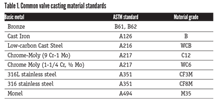NAM Monday Economic Report – December 15, 2014
The biggest domestic economic news story last week was actually a global one: The price of petroleum continued to plummet.
Of course, reduced petroleum costs also provide benefits to the larger macroeconomy. Producer prices fell 0.2 percent in November, with lower energy prices reducing overall inflationary pressures in the U.S. economy. In fact, producer prices for final demand energy goods have fallen 8.8 percent since June, and core inflation, which excludes food and energy costs, has now remained below 2 percent for six consecutive months, which is the Federal Reserve’s stated goal.
Americans are spending less to fill their gas tanks, with the Energy Information Administration reporting that regular gasoline sold for $2.68 a gallon on average last week. This should help boost consumer spending in other categories, and, in fact, retail sales grew strongly in November, up 0.7 percent for the month and 5.1 percent year-over-year. Such healthy gains should help to erase anxieties about holiday spending, as this was a strong number. Moreover, consumer confidence soared to its highest level since January 2007, according to the University of Michigan and Thomson Reuters. Lower energy costs and an improved economic outlook likely contributed to the increased perceptions.
Other recent surveys have also highlighted the better outlook for the U.S. economy. As noted in last week’s report, the NAM/IndustryWeek Survey of Manufacturers found that respondents were mostly upbeat about their own company’s outlook, with sales and employment expected to grow relatively strongly over the next 12 months. Exports were anticipated to slow somewhat due to the softer global economy, however, and manufacturers continued to express frustrations with Washington. The top policy objective noted in the survey was a desire to reduce regulatory burdens, cited by 82.8 percent of manufacturers. Rising health care costs were once again listed as the top business challenge, with an average premium increase for 2015 of 9.5 percent, with smaller manufacturers experiencing even larger cost increases.
The most recent McGladrey Manufacturing & Distribution Monitor Report was equally encouraging about the current state of the sector, with 36 percent of executives surveyed saying that their firms were “thriving.” Meanwhile, small business owners were also more upbeat in the latest National Federation of Independent Business survey. The Small Business Optimism Index rose to its highest level since February 2007, with better sales expectations helping to explain much of that rise. Hiring plans also improved. Yet, even with the better data, small firms continue to suggest that earnings remain soft. In addition, taxes and regulations are the most cited problems. For their part, respondents to the National Association for Business Economics survey were more positive in their forecasts than three months ago. Economists expect the U.S. economy to grow 2.9 percent on average in 2015, with industrial production expanding by 3.5 percent.
This morning, we will get new industrial production data for November, and it is expected to show an increase of around 0.5 percent for November. In addition, manufacturing sentiment surveys from the Kansas City, New York and Philadelphia Federal Reserve Banks will provide regional perspectives on activity, and Markit will release Flash Manufacturing Purchasing Managers’ Index data for China, the Eurozone, Japan and the United States for a global view. As such, we will get a better sense on the health of the manufacturing sector this week. In addition, the latest housing starts and consumer price index data will be reported. Beyond those data points, the Federal Open Market Committee will meet, releasing a new policy statement on Wednesday. The Federal Reserve is expected to maintain its current monetary policy stances, with conventional wisdom holding that short-term interest rates will begin to rise in mid-2015.
Chad Moutray is the chief economist, National Association of Manufacturers
RELATED CONTENT
-
MSS Publishes Revised and New Industry Standards
The Manufacturers Standardization Society (MSS) of the Valve and Fittings Industry is excited to announce publication of the new Standard Practice SP-158-2021, Supplemental High-Pressure Gas Test Procedures for Valves.
-
The Future of Valve Manufacturing is Already Here
Companies in the valve and control products industry are responding to a confluence of forces that are changing the landscape of manufacturing — automation, agility and digitalization to name a few.
-
The Biggest Valves: Sizes Growing in Step with Greater Demand
Valve manufacturers that have the expertise, skills, equipment and facilities to produce large valves are rare.






 Unloading large gate valve.jpg;maxWidth=214)

